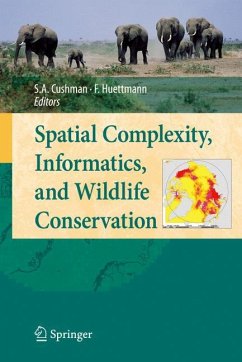As Earth faces the greatest mass extinction in 65 million years, the present is a moment of tremendous foment and emergence in ecological science. With leaps in advances in ecological research and the technical tools available, scientists face the critical task of challenging policymakers and the public to recognize the urgency of our global crisis. This book focuses directly on the interplay between theory, data, and analytical methodology in the rapidly evolving fields of animal ecology, conservation, and management. The mixture of topics of particular current relevance includes landscape ecology, remote sensing, spatial modeling, geostatistics, genomics, and ecological informatics. The greatest interest to the practicing scientist and graduate student will be the synthesis and integration of these topics to provide a composite view of the emerging field of spatial ecological informatics and its applications in research and management.
From the reviews:
"Spatial complexity, informatics, and wildlife conservation was based on the symposium 'Advanced GeoScience Applications' held at the 9th International Mammalogical Conference in Hokkaido, Japan in 2005. ... the intended audience would include researchers, scientists and graduate level students. ... this book more valuable to have available in libraries, university departments or labs ... . I recommend practitioners of spatial data and their analysis read this book to extract what valuable information they can." -- Stephen L. Webb, Ecology, Vol. 91 (12), December, 2010
"Spatial complexity, informatics, and wildlife conservation was based on the symposium 'Advanced GeoScience Applications' held at the 9th International Mammalogical Conference in Hokkaido, Japan in 2005. ... the intended audience would include researchers, scientists and graduate level students. ... this book more valuable to have available in libraries, university departments or labs ... . I recommend practitioners of spatial data and their analysis read this book to extract what valuable information they can." -- Stephen L. Webb, Ecology, Vol. 91 (12), December, 2010









